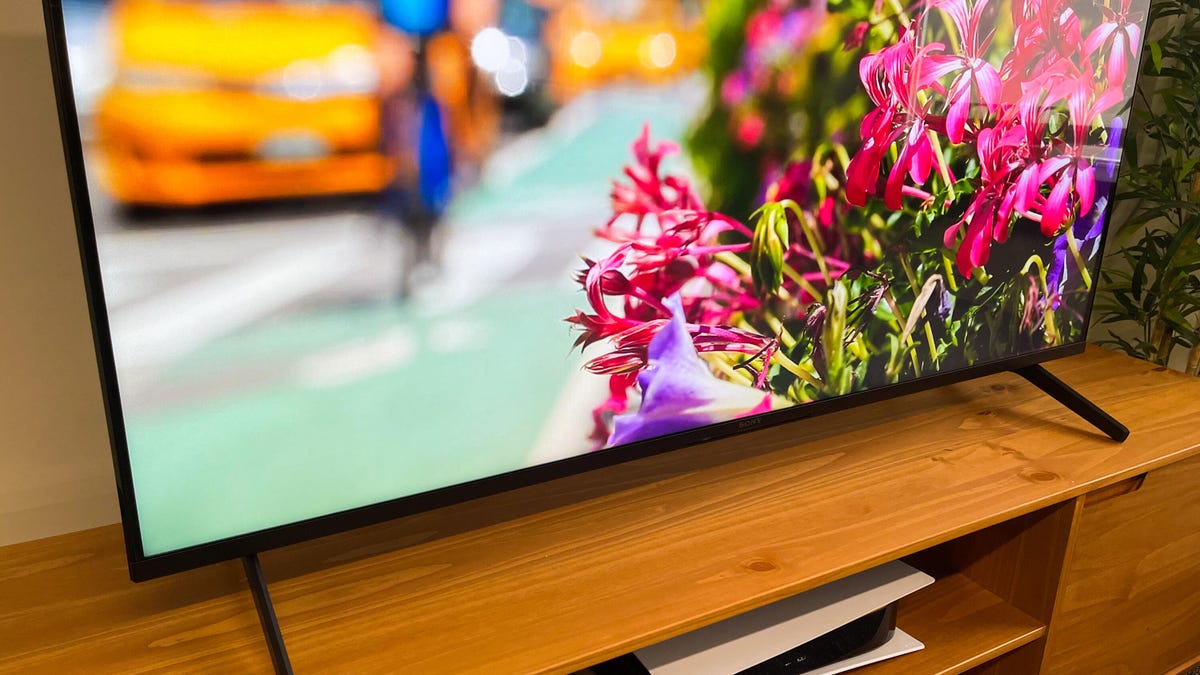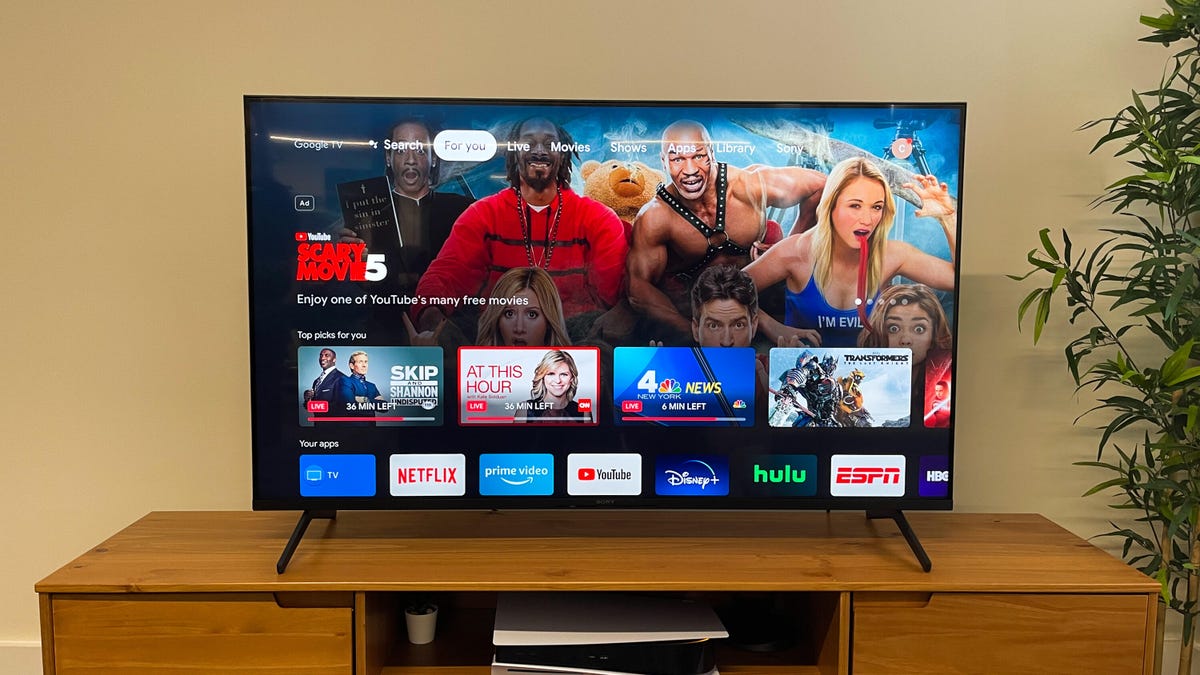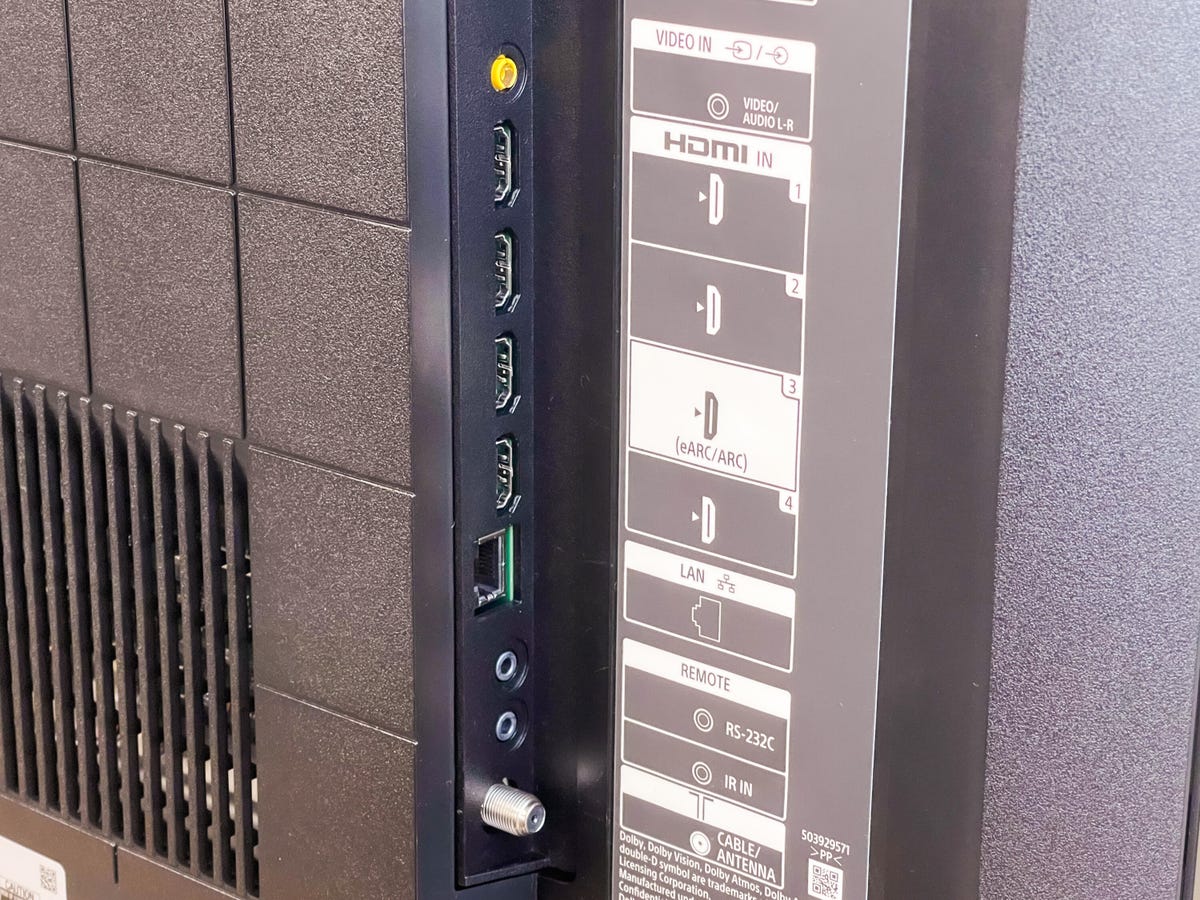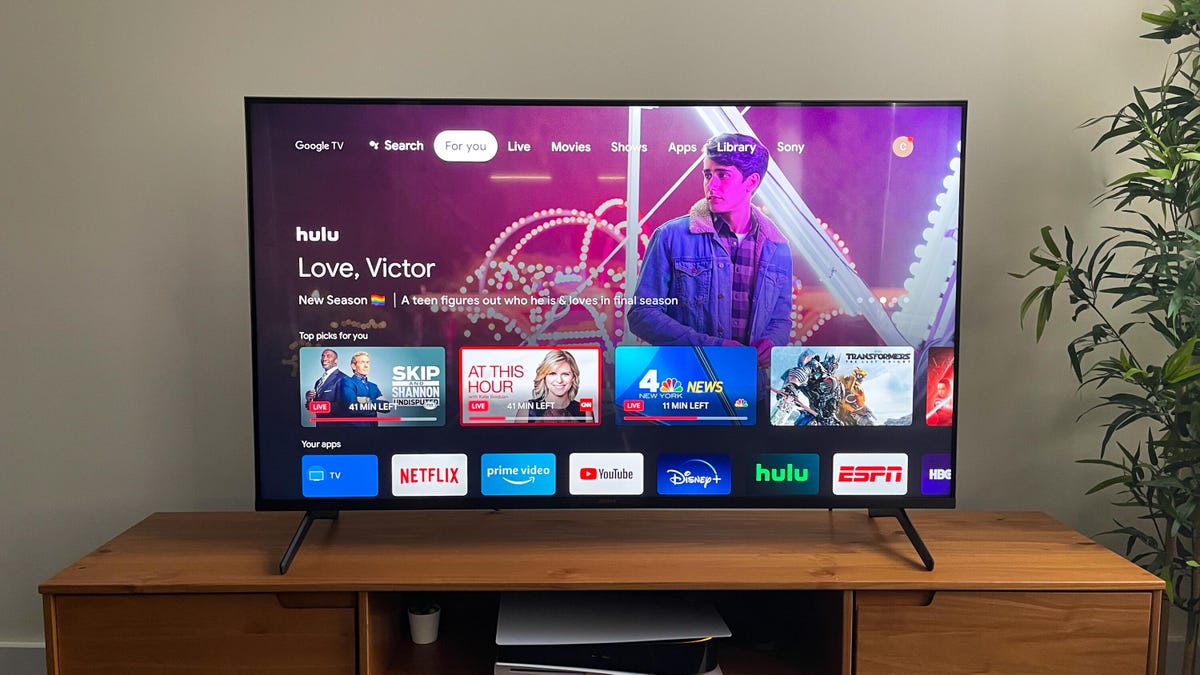Sony has been making TVs televisions for 60 years and today it’s known for best for expensive, high-performance screens. In 2022 it continued the trend by releasing a kitchen sink worth of high-tech displays, from 8K to mini-LED to QD-OLED, and most demand serious cash. So far 2022 is more about tightening belts than bells and whistles, however, so I took a look at Sony’s cheapest TV first. The X80K is a decent all-around performer, and could appeal to TV shoppers on a budget who just want a Sony, but you can certainly do better for the money.
In early summer the X80K costs about the same as the Samsung QN60B and the TCL 6-Series. In my side-by-side comparison of the three in CNET’s TV test lab, the Samsung looked slightly better overall than the Sony, with superior brightness and contrast, while the TCL totally trounced them both. That might be a surprise if you’re new to the TV buying game and just paying attention to brands — wait, a TCL looks better than a Sony? — but if you look at their underlying technologies, it makes perfect sense. The Sony and Samsung use basic LCD backlights while the TCL leverages step-up screen tech, namely full-array local dimming and mini-LED.
Beyond picture I did like Sony’s Google smart TV system and no-fuss design, and it comes in a wide array of sizes. Later in the year it’s sure to receive hefty price cuts, like TVs always do around the Black Friday and the holidays, that could make it more competitive. For now, however, the X80K doesn’t do enough beyond its name to stand out.
Sony KD-X80K sizes, series comparison
I performed a hands-on evaluation of the 55-inch Sony KD-55X80K, but this review also applies to the other screen sizes in the series. All sizes have identical specs and should provide very similar picture quality.
Sony KD-43X80K, 43-inch
Sony KD-50X80K, 50-inch
Sony KD-55X80K, 55-inch
Sony KD-65X80K, 65-inch
Sony KD-75X80K, 75-inch
Sony KD-85X80K, 85-inch
The X80K series is the entry-level in Sony’s 2022 TV lineup, with relatively basic picture features. It’s missing the HDMI 2.1 gaming features, 120Hz refresh rate and mini-LED backlight found on step-up models, for example.

James Martin/CNET
Keep it simple, Sony
The X80K blends in rather than stands out with a dark gray color along the bottom of its frame. The other three sides are black and their edges angle in slightly. The stand consists of simple A-shaped legs splayed far to either side. Seen from the side, the X80K is substantially thicker than the Samsung Q60B (2.83 vs. 1 inch), which could be a consideration if you want as flush a wall-mount as possible.
I like Sony’s simple remote. The keys are laid out in familiar fashion and the requisite shortcut buttons for YouTube, Netflix, Disney Plus and Prime Video are onboard, and I appreciated the dedicated input key that some clickers lack. I could do without the number key and another dedicated to an over-the-air grid guide at the bottom, but some users might appreciate them.

James Martin/CNET
Google TV: Feature-rich and promo-heavy
Among all of the smart TV systems I like Google TV second-best, after Roku, and its implementation on the Sony X80K is the TV’s best feature. Highlights include excellent voice results thanks to Google Assistant, tight integration with Google apps in particular YouTube and YouTube TV, and more apps overall, thanks to the Play store, than proprietary systems like Samsung and LG.
Responses were quick enough but felt a step behind most Roku TVs I’ve used. Once I selected a profile it took a long second or two for the main For You home page to populate with thumbnails, for example. I didn’t love the large chunk of space at the top devoted to promotions of shows and movies on various services. I also wish the “continue watching” row was higher-up rather than placed below the “top picks for you” and apps rows. Top picks seemed to take into account my preferences for sci-fi shows and movies once I went through the “improve your recommendations” screen, but there was still plenty of content I didn’t care about. Suggestions across different apps are a fine idea, but I personally the simplicity of Roku app-centric menus.

James Martin/CNET
Google TV’s profiles worked well. I was easily able to set up a kid’s profile, and I appreciated that appropriate apps like YouTube Kids and PBS Kids were suggested for me to add, and that Netflix automatically invoked the kids profile. During setup I was also prompted to set screen time limits, create a profile picture and more. Google TV’s system provides better parental controls than Roku, although Fire TV is similarly robust.
Modest features, extra connections
Key features
| Display technology | LED LCD |
|---|---|
| LED backlight | Direct |
| Resolution | 4K |
| HDR compatible | HDR10 and Dolby Vision |
| Smart TV | Google TV |
| Remote | Standard with voice |
As an entry-level TV the X80K’s lack major picture-enhancing extras. It has a 60Hz refresh rate rather than 120Hz, although it does offer smoothing, aka the soap opera effect, if you want to turn it on. It supports Dolby Vision and Dolby Atmos formats, as well as standard HDR10, as do many other mid-priced TVs.
- Four HDMI inputs (One with eARC)
- Two USB 2.0 ports
- Composite AV input (3.5mm)
- Optical digital audio output
- RF (antenna) input
- Ethernet (LAN) port
Physical connections are better than many basic TVs’ however, with a fourth HDMI as well as analog video.

James Martin/CNET
Picture quality comparisons
I set up the 55-inch Sony X80K next to its direct competitor from Samsung, as well as less expensive Fire TV and a TCL with superior picture quality specifications. Here’s the lineup:
Samsung QN55Q60B
Amazon Fire TV Omni
TCL 65R646
TV and movies: The Sony delivered the second-worst picture in the lineup overall, beating out only the Omni. Its main weakness was relatively weak contrast, caused by both lighter (worse) black levels and dimmer highlights than the Samsung.
Watching Hustle on Netflix, for example, the black around the credits and the shadows in the locker room were lighter and less realistic than on the other TVs, if only slightly worse than the Samsung and the Omni. The Samsung was also significantly brighter than the Sony in its most accurate picture modes, which made the film’s HDR image pop more in comparison. The skin tones of Adam Sandler and the basketball players looked truer than the Samsung and Omni, but overall I preferred the Samsung’s picture by a hair.
The story was similar with the challenging Spears and Munsil 4K HDR Benchmark montage on Blu-ray, where the Samsung looked a bit brighter than the Sony. Both outperformed the Omni, which showed less high-level detail in snowscapes for example, but the difference wasn’t enough to justify the Sony’s much higher price.
The TCL, meanwhile, was superior in pretty much every way to the others, with excellent contrast, deep black levels and powerful brightness that made the Sony, Samsung and Fire TV pale by comparison.

James Martin/CNET
Gaming: Playing Horizon Forbidden West, color was more realistic and accurate on the Sony, and similar to the TCL and LG, while the Samsung in every mode appeared more saturated and, well, game-y. Again the Samsung won for contrast and punch, handily, although to its credit the Sony revealed more details in the shadows, which is an advantage in dark games with enemies lurking in the shadows. The Sony lacked the comprehensive gaming stats display of the Samsung and both had similar (excellent) input lag, but overall I preferred the Samsung’s punchier look. The TCL, meanwhile, combined a brighter image than either one with excellent shadow detail and, yes, colors as accurate (and better-looking) than the Sony.
Bright lighting: The Sony measured relatively dim, backing up my subjective impressions, and both it and the Samsung were less-bright than the TCL and a less-expensive Vizio, both equipped with local dimming. Below are my measurements in nits for select comparison TVs in their brightest and most accurate picture modes, using both standard dynamic range (SDR) and high dynamic range (HDR) test patterns.
Light output in nits
| TV | Brightest mode (SDR) | Accurate mode (SDR) | Brightest mode (HDR) | Accurate mode (HDR) |
|---|---|---|---|---|
| TCL 65R635 | 1,114 | 792 | 1,292 | 1,102 |
| Vizio M65Q7-J01 | 791 | 562 | 764 | 631 |
| Samsung QN55Q60B | 549 | 343 | 540 | 514 |
| Sony KD-55X80K | 369 | 357 | 446 | 387 |
| LG OLED65C2 | 413 | 389 | 812 | 759 |
Despite its lower light output numbers the Sony is still bright enough for all but the most light-filled viewing environments. As with most TVs, the brightest modes for HDR and SDR (Game and Vivid, respectively) are less accurate. For the accurate results listed above I used Custom mode and I recommend X80K owners do the same to get good color in bright rooms. Note that with SDR, you’ll need to disable the Auto Energy Saving setting (Settings > Display & Sound > Picture > Light Sensor > Off) to get full brightness.
The Samsung’s screen was better than that of the Sony at dealing with bright reflections in the room. Sitting under bright lights, I saw my reflection in the black screen of the X80K more clearly (and it was more distracting) than in any of the other TV screens.
Uniformity and viewing angle: The screen of the X80K sample I reviewed showed no major issues with bright spots or dark areas, and in test patterns appeared more uniform than the Omni and similar to the other displays. Watching hockey I saw very little evidence of irregularities as the camera panned across the ice. From off-angle the Samsung maintained superior black level and contrast but Sony had better color, much like the TVs’ respective performance from straight on.

James Martin/CNET
Picture settings notes
The most accurate settings were Cinema and Custom mode for both HDR and SDR, and Custom measured slightly more accurate so I went with that. Game is best for gaming, thanks to its low input lag, and color was similar to Custom and exceedingly accurate.
The X80K offers settings that engage smoothing, aka the soap opera effect, as I prefer to turn it off for TV shows and movies. You can experiment with the settings (Settings > Display & Sound > Picture > Motion > Motionflow > Custom) and it’s off by default in the Cinema and Custom modes.
Geek box
| SDR | Result | Score |
|---|---|---|
| Black luminance (0%) | 0.075 | Poor |
| Peak white luminance (SDR) | 357 | Average |
| Avg. gamma (10-100%) | 2.46 | Poor |
| Avg. grayscale error (10-100%) | 2.27 | Good |
| Dark gray error (30%) | 2.07 | Good |
| Bright gray error (80%) | 3.04 | Average |
| Avg. color checker error | 3.08 | Average |
| Avg. saturation sweeps error | 2.52 | Good |
| Avg. color error | 2.67 | Good |
| Input lag (Game mode) | 11.93 | Good |
| HDR10 | ||
| Black luminance (0%) | 0.084 | Poor |
| Peak white luminance (10% win) | 446 | Poor |
| Gamut % UHDA/P3 (CIE 1976) | 94.73 | Average |
| ColorMatch HDR error | 8.08 | Poor |
| Avg. color checker error | 1.54 | Good |
| Input lag (Game mode, 4K HDR) | 11.67 | Good |
See How We Test TVs for more details.
Portrait Displays Calman calibration software was used in this review.




